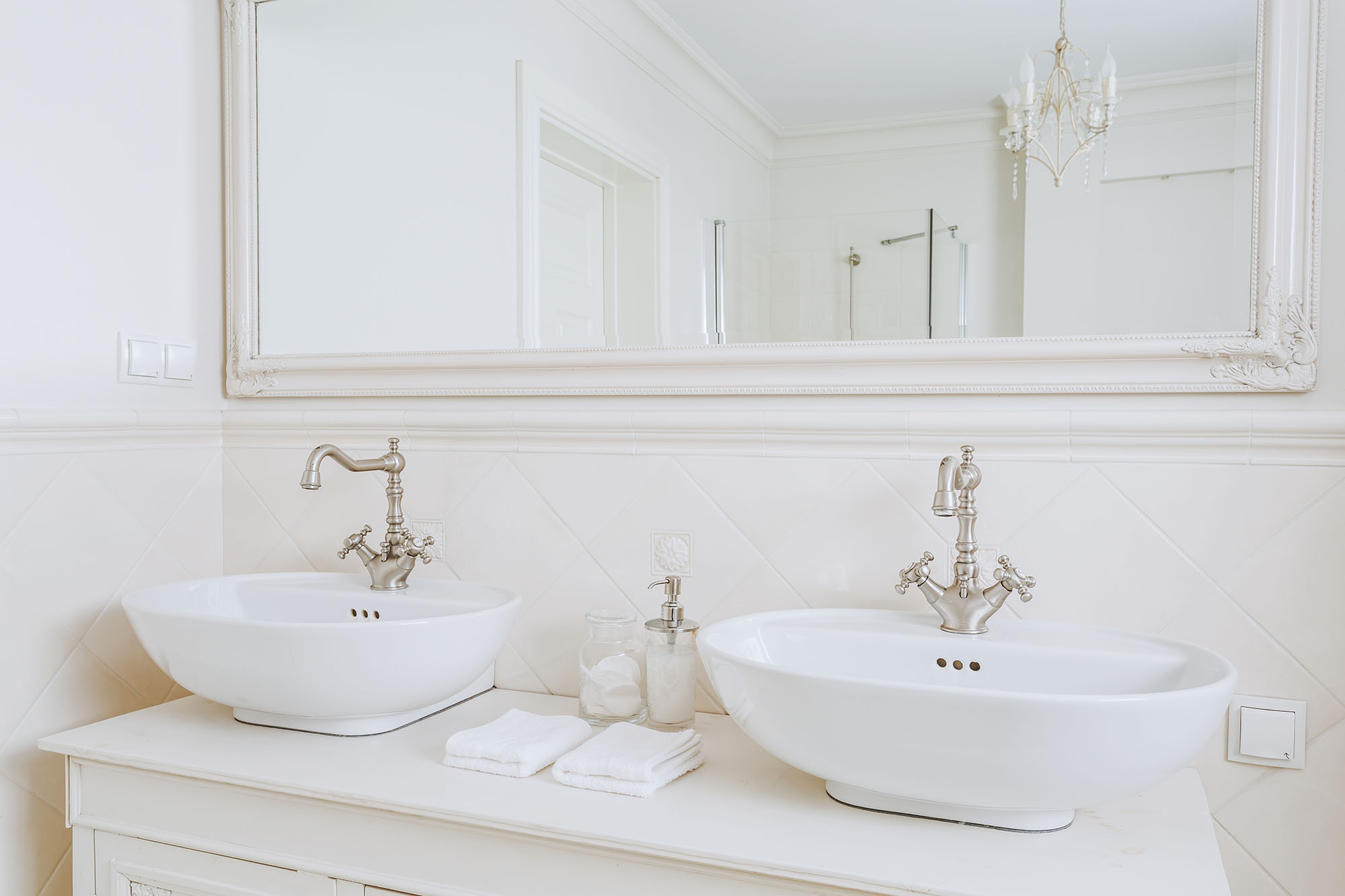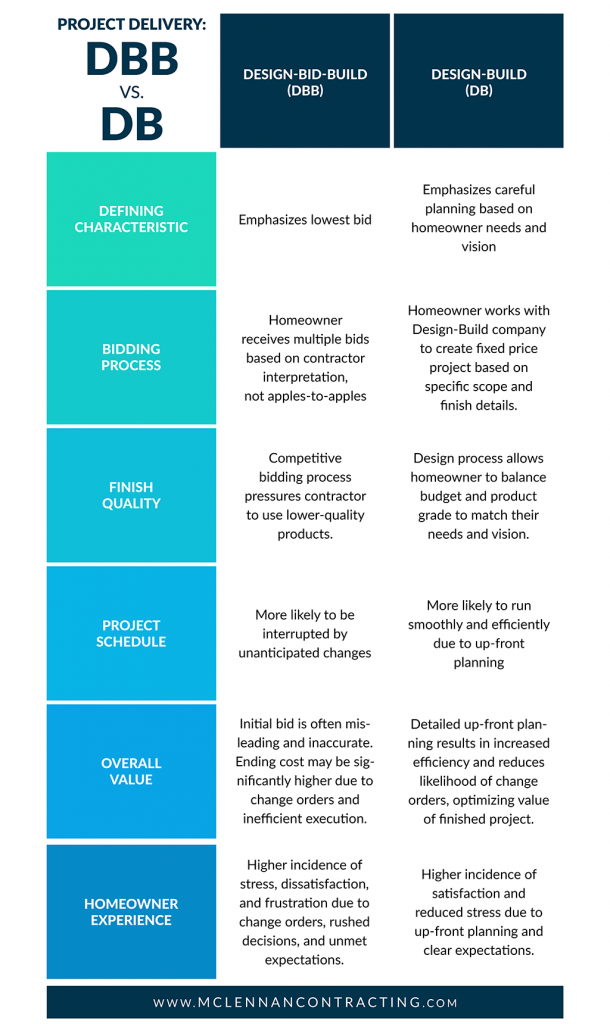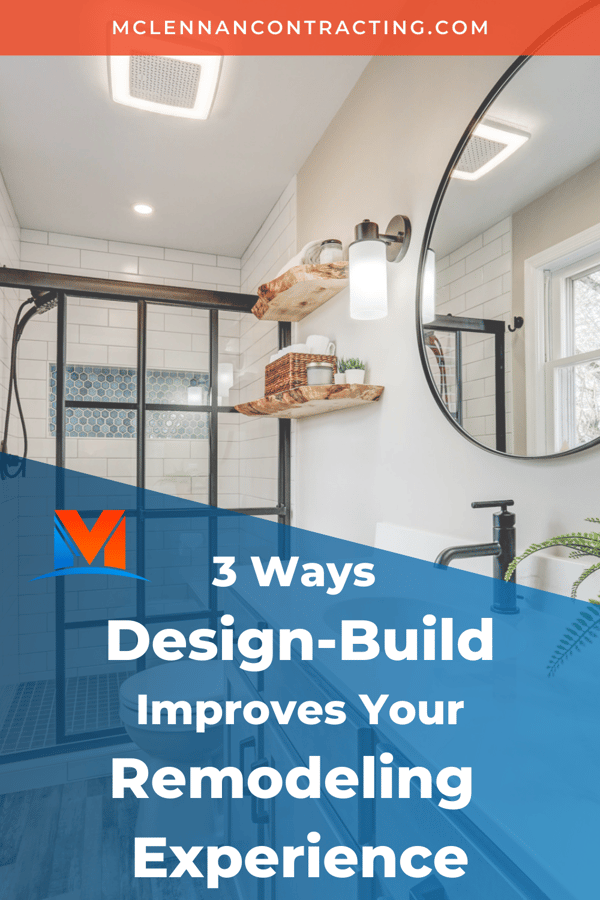5 min read
3 Ways Design-Build Improves Your Remodeling Experience
By: Alison McLennan | May 1, 2020

The stories they tell usually include one or more of the following remodeling experiences:
- A contractor bid the project within their budget, but then surprised them with costly change orders that nearly doubled the ending total.
- They were told their project would take a week, but it dragged on for months.
- The finished space looked great at first, but before long the poor quality of the materials and installation became painfully clear, leading to expensive repairs.
How do these dreaded remodeling scenarios come to pass, and what can you do to avoid them?
Project Delivery: Design-Bid-Build vs. Design-Build
“Project delivery” refers to the method used to plan, design, and construct your remodeling project. Most remodeling contractors fall into one of two camps: Design-Bid-Build (a.k.a. traditional remodeling) or Design-Build.
What is Design-Bid-Build Remodeling?
If you’ve remodeled before (especially in our lovely hamlet of Lancaster, PA), you’ve likely experienced some version of a traditional method of project delivery called Design-Bid-Build.
When the Design-Bid-Build method is used for large residential and commercial projects, the business or homeowner hires a designer or architect to plan the project, and then collects bids from contractors based on pre-designed plans.
For smaller remodels, such as bathrooms, the Design-Bid-Build method often begins with the homeowner requesting bids from several contractors for a general scope of work, before finish details are finalized.
In this scenario, many of the design decisions are made after the homeowner signs a build contract, and are handled as allowances or change orders.
What is Design-Build Remodeling?
By contrast, the Design-Build method brings all aspects of design and construction under one collaborative roof, with an emphasis on up-front planning.
The homeowner works directly with the Design-Build company to plan the details of their project, and then contracts with them to build the project after the design is finalized.
Why does this distinction matter? Most remodeling frustrations trace back to unmet expectations, which are rooted in inadequate project design. And in many residential remodeling scenarios, inadequate design is an all-too-common byproduct of the traditional Design-Bid-Build model.
If you value a low-stress remodeling experience, start by choosing Design-Build—a method of project delivery that maximizes up-front planning and minimizes unpleasant surprises.
How Does Design-Bid-Build Set You Up for Disappointment?
- Design-Bid-Build (DBB) leaves the technical aspects of design up to contractor interpretation. Homeowners are skilled at envisioning finish details and gathering visual concepts for their projects. However, the technical considerations of design are often left in the hands of the contractor bidding the project. This directly impacts the contractor’s bid and how they build the project, and becomes fodder for unmet expectations later on.
- DBB promotes the myth of “apples-to-apples” comparison. When elements of a remodel are left to interpretation, it’s impossible to know if one contractor’s bid reflects the same project as another. Instead of apples-to-apples, two bids might be better described as apples-to-oranges. Yet the DBB model, by nature, emphasizes price comparison as a deciding factor for the homeowner, while minimizing the moving parts of the project that could influence the ending cost, customer satisfaction, and build quality.
- DBB sets homeowners up for dissatisfaction. Those small (and sometimes large) details that weren’t fully fleshed out at the start come into play during project construction in the form of change orders, schedule upsets, and disappointing finish details.
How Does Design-Build Set You Up for Success?'
These pitfalls of traditional Design-Bid-Build project delivery led to our company’s decision to transition to the Design-Build model in 2018, and we’re not alone.
Design-Build is the fastest-growing method of project delivery in America, for remodels of all sizes. Let’s look at why.
1. Design-Build delivers high-satisfaction, low-stress projects.
The collaborative nature of Design-Build integrates the needs and vision of the homeowner with the technical expertise of the design-build company. It’s a process built on trust, mutual respect, and teamwork. The result is innovation, creativity, and well-defined expectations.
This dynamic leads to well-built, highly satisfying projects. It also reduces homeowner stress by providing a sense of partnership and support, while circumventing unanticipated costs and split-second decisions during construction.
2. Design-Build gets your project finished faster.
During design, the project’s scope of work is spelled out in detail, taking into account selected finish products and material lead times. This allows for the creation of a detailed, realistic project schedule that uses time efficiently to deliver a completed project faster. It also prevents the “hiccups” that can lead to perpetually shifting, drawn-out project timelines.
3. Design-Build saves you money.
Because of the emphasis on detailed up-front planning, Design-Build projects tend to run more smoothly, making them more cost-effective for everyone involved. They also rarely require significant change orders, since so many questions are asked and answered up front.

Design-Build is a highly collaborative, planning-oriented method most likely to deliver the positive remodeling experience homeowners want.
If you’d like to learn more about McLennan Contracting’s specific Design-Build process, and what to expect if you work with us, reach out today to schedule a consultation.




